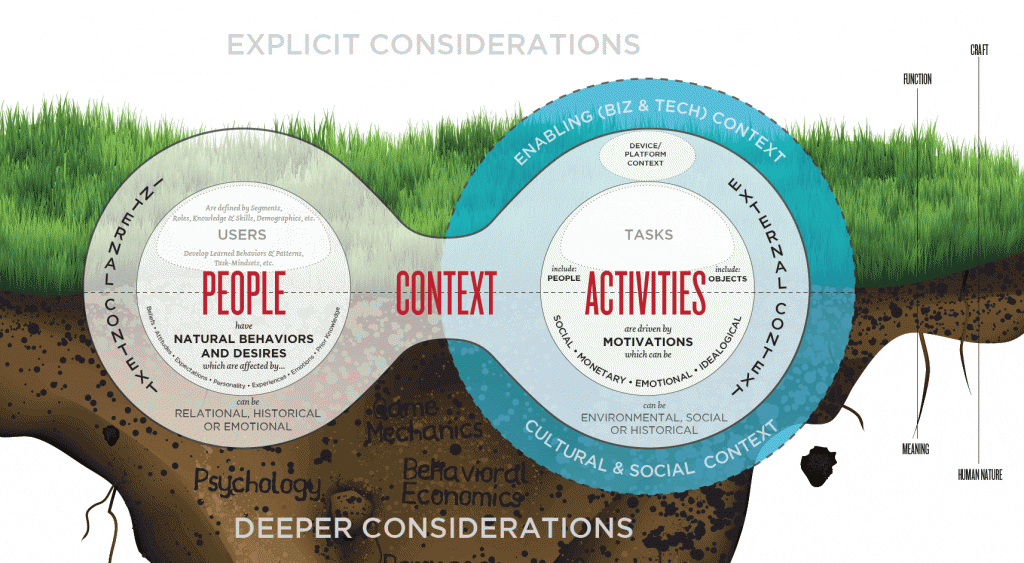Over the past few years, Stephen P. Anderson has worked on developing (and perfecting) the relationship between people. context and activities to create experiences. If we look at the infographic below, we might assume these relationships are simple, even shallow. Yet “behind every explicit piece of information, we can dive much deeper for a richer understanding of the space in which we are designing. People are much more than users (or markets, prospects, players, stakeholders, or…). An exploration of activities yields more insights than simple task or use case definition. And context is so much more than a device or platform— from the environment we as information architects define to the environmental and economic context in which we work.” (poetpainter.com)
As a result of creating this infographic, Anderson has recognized the importance of context (both internal and external). Although there are some behaviors that affect unrelated activity, overall, context does shape behavior. Thus, deeply analyzing all factions that tie into the human experience will allow us to develop richer, more meaningful experiences.
Check out Stephen P. Anderson’s “The Fundamentals of Experience Model” in depth here: http://www.poetpainter.com/thoughts/article/ia-summit-2009-the-fundamentals-of-experience-design-
